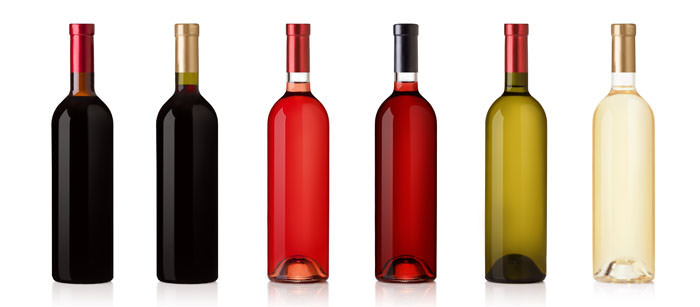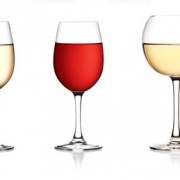28 Terms that Make You Sound Like a Sommelier (Part 2)
The last post in this series named the first fourteen of the twenty-eight terms that make you sound like a sommelier, including descriptions of the wine’s color and scent. At the end of this post, you’ll see how you can put all these terms together to create an awesome wine menu or wine tasting, or to just sell more wines. Here are the last fourteen wine-expert terms you need to know in order to increase your wine revenues. (Part 1 contains numbers 1-14).
15. Body. This term describes how thick or thin the wine is when you drink it. This can also be said in terms like “light,” “medium,” or “full,” or if it’s very full, you can describe it as “chewy.”
16. Mouthfeel. Another term for the body, usually describing a full-bodied wine. “Heavy,” “chewy,” and “light” are effective ways to characterize the mouthfeel.
17. Sweet. Obvious. However, do not confuse “fruity” with “sweet.” A Cabernet Sauvignon can be described as fruity, but unless it’s a godawful wine, that Cab shouldn’t be sweet.
18. Dry. This is the most common term that people use for wine, and I debated putting it on this list because it’s open to so much (mis)interpretation. I’m going to put my foot down and say that unless all the hairs on your tongue stand up and the inside of your cheeks wrinkle, you should not be describing a wine as “dry.”
19. Tannins. Ah, and here’s what makes your wine dry. Tannins come from grape seeds, skin, and the oak inside the wine barrel. Since grape skin is such a huge tannin creator, red wine tends to be more tannic, but barrel-aged whites can be pretty darn tannic too. Not only does tannin dry out your mouth, it also makes your wine taste bitter. You can tell when your wine has too many tannins, because it’ll remind you of drinking over-steeped black tea. ‘Nuff said.
20. Sulfites. Some wines say “Contains Sulfites” on the bottle. This means that sulphur dioxide has been added to the wine as a preservative. As a rule, try to avoid offering wine with sulfites, as high concentrates of sulphur dioxide will smell and taste like a fresh-struck match. The sweeter a wine is, the more likely it is to have sulfites, so read dessert wine labels carefully. Your customers who have allergies or asthma will not react well to wines with sulphur dioxide, and sulfites make hangovers a distinct probability (this is why so many people say “Whenever I drink wine, I get a hangover”). Although small amounts of sulfites are unavoidable in wine, when a bottle says “Contains Sulfites,” it means that extra sulfites have been added by the winery–and that’s not good for anyone.
21. Acidity. Although this sounds bad, acidity is actually good in wine. If your wine dances across the tongue, catching your attention, that means it’s got good acidity. If it tastes flat and boring and lame, it’s probably got low acidity. One warning that I can’t stress enough: If your guests are ordering creamy soups or sauces, please do your best to steer them away from wines with high acidity, because creamy foods plus acidic wines equal a curdled taste. Ewww.
22. Oak. As the most common wood scent and flavor, your customers are likely to have strong opinions about oak. I know I do. (Go ahead, ask. I dare you.)
23. Finish. This describes how long the flavor of the wine stays in your mouth after you swallow it. If it hangs around for twenty seconds or longer, you’ve got a long finish. As a general rule, remember that the longer the finish, the better the wine.
24. Balance. This is when all of the flavors—the tannins, acidity, fruitiness, dryness, etc.—all come together in a seamless, delicious harmony.
25. Complexity. The “seamless, delicious harmony” that I just spoke of gets better. A wine can be described as complex when it develops new, exciting flavors as it passes over the different areas of the tongue, or when its flavor deepens as it sits in your glass. Complexity is a huge selling point.
26. Climate. Cold or hot, this describes the area where the grapes are grown. If your wine has thick legs, it probably comes from a hot climate. If it’s got thin legs, it probably comes from a cool climate.
27. Age. When talking about the age of a bottle, you would say it is “young” (1-3 years), “of medium age” (3-5 years), or “mature” (5+ years), and the way to determine this is to look at the vintage and do the math. Right now, in 2014, a wine from 2010 is “of medium age”.
28. Vintage. The year that the wine grapes were grown and harvested. This is expressed as a year, so on a 2012 Pinot noir, the vintage is “2012.”
Feel like an expert yet? Try putting all of these terms together, in order, and you’ll sound amazing. My example is below.
Here’s what you sound like when you use these terms:
This Cabernet Sauvignon is slightly hazy, with a deep purple hue, mild flocculation, thick legs, and a well developed nose. With strong tones of currant, the aroma is rich and tempting, and the tantalizing bouquet clearly emphasizes the maturity of this selection. Boldly fruit-forward, this vintage captures the earthy character of its terroir, complemented perfectly by a lightly smoky bouquet. This winery is known for developing wines to a deep vinosity, and this Cabernet is no exception, with its intense tobacco undertones.
Full-bodied and dry with a chewy mouthfeel, this wine delivers an exciting palate, with tempered tannins and bright acidity. The finish is long and lasting, and the complex, yet balanced play of flavors perfectly reflect the characteristics of a warm climate and an exemplary vintage.
Now go sell some wine, you budding sommelier!
- Why Your Wine Menu Is Scaring Your Guests - February 27, 2015
- How to Host a Better Restaurant Week and Get More Customers - February 23, 2015
- Choosing Your Restaurant Wine Glass – 3 Approaches - February 16, 2015






